
The US Ski Mountaineering Association (USSMA website) recently announced a changing of the guard with Nick Francis and Chad Brackelsberg stepping down from their positions as President and Vice-President. Ram Mikulas of Summit County, Colorado and Matt Hickey from Colorado Springs (originally from Minnesota) will be taking over their roles effective immediately.
Nick and Chad will continue in a support role while the new duo finds their legs. We reached out to Mikulas Ram to get some more information on the new President and where he hopes to take the USSMA under his leadership.
Q: How long have you been ski touring and ski mountaineering racing?
I grew up recreational hiking, climbing, and kayaking. After a shoulder injury I begun mountain biking a lot, fell in love with it and got involved with racing. That let to road racing, trail running, and finally skimo. I started off skinning resorts with friends 6 years ago and jumped right into racing. I loved how dynamic ski mountaineering racing is and was quickly hooked!
Q: What do you do for work when you are not out skiing?
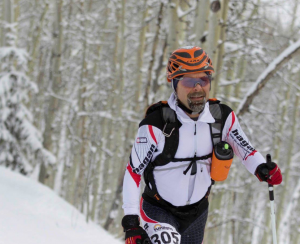 I worked in the corporate finance world in Denver, where I’m from, for many years. My wife and I had a weekend mountain getaway and played the weekend warrior game for a while, but made a change and moved up to Summit County 11 years ago. I work year round at Copper Mountain Resort as an eCommerce Manager. Awesome mountain, company, and people.
I worked in the corporate finance world in Denver, where I’m from, for many years. My wife and I had a weekend mountain getaway and played the weekend warrior game for a while, but made a change and moved up to Summit County 11 years ago. I work year round at Copper Mountain Resort as an eCommerce Manager. Awesome mountain, company, and people.
Q: What inspired you to go for the USSMA president position?
Whatever I’m involved in, I like to immerse myself and learn as much as possible and be involved below the surface. I quickly became passionate about the sport and wanted to find ways to introduce it to others and help it grow.
A few years back I worked with some other racers in Summit County, CO to help start the Summit Skimo Club. I’ve been acting as VP and have been leading a program we have to introduce new people to skimo and provide clinics for all abilities. I’ve had some great communication with Nick and others involved in the USSMA over the years. So, I suppose my passion for the sport and community has inspired me.
Q: What skills are you bringing that you believe will help you in leading the USSMA?
Organization, leadership, and communication which will be key moving forward.
Q: What are your primary goals to accomplish over the next few years?
The Vision of the USSMA is to expand the sport of Ski Mountaineering throughout the United States, with a current primary focus on developing the association into a fully functional national sports organization.
My goals will be to establish formal structure and process within the association and to become financially viable and appropriately resourced. With the recognition of the IOC and looking toward inclusion in future Olympics, I will strive for an enhanced focus on fundraising and developing athletes.
Q: Will the US develop a standing ‘National Team’ separate from its ‘World Championship Team’ similar to Canada and other countries?
This is a direction the USSMA would like to move toward as we focus on developing athletes. As for when and to what extent will need to be determined by available resources.
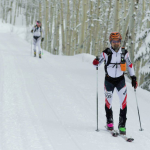 Q: The US has large participation numbers for skimo. Why do you think this is?
Q: The US has large participation numbers for skimo. Why do you think this is?
Awareness and access to uphill skiing is growing and resorts are beginning to embrace this new demographic. SIA (SnowSports Industries America) data reports strong growth in the backcountry / uphill sector. I think the bottom line is that the word is out and people are trying it, which leads to more people participating at a recreational and competitive levels.
Q: How can the USSMA encourage more US athletes to race on a world stage (World Cups and Grande Course events)?
As the USSMA builds resources and a National Team is developed more awareness, exposure, and support should be available to assist and encourage US athletes to race abroad.
Q: How does the PRO2022 program encourage athlete development?
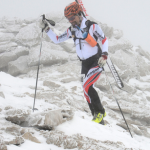 Project 2022 is a concept to identify up and coming skimo athletes that the USSMA can help develop into future Olympians. PRO2022 Camps will be put on throughout the country in skimo hot spots to identify talent, coach the coaches, and build the foundation with the under 23 (U-23) age group.
Project 2022 is a concept to identify up and coming skimo athletes that the USSMA can help develop into future Olympians. PRO2022 Camps will be put on throughout the country in skimo hot spots to identify talent, coach the coaches, and build the foundation with the under 23 (U-23) age group.
Instruction is built around the ISMF Sprint Course (likely Olympic event) and designed to “shortcut” American skiers’ path to elite skimo technique. The first camp was held a week ago in Summit County, CO and was a big success with many U23 athletes and coaches. Plans are underway for setting up additional camps this season. More communication to come.
Q: Right now a focus is on ‘coaching the coaches’, what does this mean and how is it being accomplished?
The focus is to build a coaching and support structure to develop athletes. PRO2022 Camps in 2016/2017/2018 will include “coach the coaches” to train regional coaches on the US skimo coaching methodology.
Call for Comments & Suggestions
What questions would you pose to the new USSMA leadership? How do you think skimo racing could be progressed in North America?
More reading: Interview ISMF President
The above interview was second in our “presidents interview series” so if you would like to know more about direction of skimo on the world stage read Interview with ISMF President about Skimo & Olympics and Anti-doping Efforts with Armando Mariotta.
Olympics
Skimo Road to Olympics: ISMF Press Release
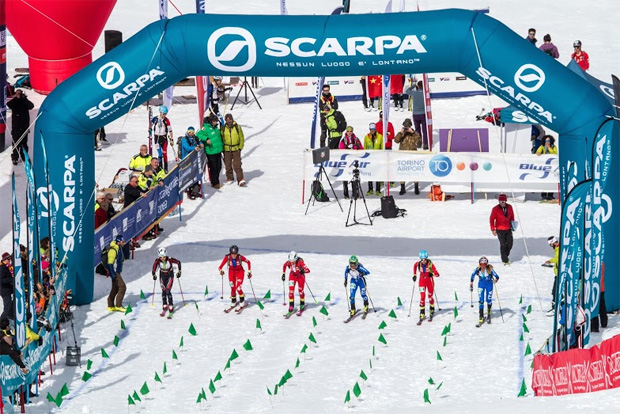
This is an official press release issued by International Ski Mountaineering Federation (ISMF) couple of weeks ago that landed in my spam box and I only found it now. It summarizes the latest positive developments of ISMF efforts in making skimo an olympic sport:
ISMF delegation will meet the Committee in Pyeongchang and attend the Asian Series to work on a showcase for 2018 Games. Meanwhile, by next summer the International federation hopes to receive the final recognition by the IOC
It is grand and it is big: it is the Olympic dream of Ski mountaineering. “Skimo people” have been chasing a common goal in recent years, committing themselves to achieve the target of entering the five circles family of the Winter Olympics Games.
Ski mountaineering is one of the few winter sports that records a growth in the last years. Numbers and statistics show an opposite and positive trend compared to other sports, not only with the number of athletes, but also with weekend fan, who approach this discipline to experience the unique emotions that only mountains can give.
Therefore, parallel to the agonistic side of ski mountaineering, the strength of ISMF, international Federation, is focused to fulfill the International Olympic Committee requirements in order to be part of the Games.
The IOC has already agreed that Ski mountaineering is an interesting discipline and in April 2014 a provisional assessment was assigned to ISMF.
A further step is expected next summer when the IOC Session will decide whether to grant the ISMF the full recognition.
The road ahead is still long – says Armando Mariotta, ISMF president – but there are many reasons why the dream could come true.
One of the most important aspect is the sustainability of this sport: the main ingredient of any ski mountaineering competition is just nature, and, as the IOC recommends, all the facilities needed on site can be removable, temporary and environmental friendly.
The disciplines we hope that will be promoted at Olympics – adds Lluis Lopez, ISMF Sport and Events vice president – are three: the Vertical, the Sprint and the Individual race.
The idea the federal board is working on, is a showcase to be organized in South Korea, during the Pyeongchang Olympics Games in February 2018.
That would be a perfect stage to show what Skimo is made of and which are the values that lay behind our way of competing”, explains Marco Mosso ISMF Marketing Vice President.
In these past three years much has been done regarding the development of the sport. First of all, the World cup has become more and more international with several events throughout Europe and many important links to other circuits all around the world.
The new web site www.ismf-ski.org has now become a reliable instrument of information. With good connections also to socials and you tube channel, the emotions of Skimo have been spread throughout the web and traditional media and press.
Furthermore, the new partnership with Infront, leader company in sport advisory, has allowed a professional step forward in marketing and communications skills.
The Swiss-Italian company will enhance our strength in promoting ski mountaineering. – adds Mariotta – They will be in charge of TV production and broadcasting highlights of many races and will also take care, on our behalf, of the media rights distribution and sponsorship in some of the venues.
Finally, next March, ISMF will be on tour in South Korea to attend the Asian series races. The delegation, including president Mariotta and Gil Orriols Jansana, technical director, will cooperate with the local organizers of the two events on stage – a Vertical and an Individual race – and they will also meet up with the Vice president of the South Korean Olympic Committee in Pyeongchang, in order to set up a master plan regarding the skimo showcase during the 2018 Winter Olympic Games.
At SkinTrack, while I think these are truly exciting developments for the sport I also believe that skimo community as a whole needs to care about what form of skimo will ultimately be featured at the Olympic Games. Here is my article from two years ago where I expressed my concerns about skimo becoming an olympic sport due to economical forces that also shaped cross-country skiing over the last decade.
What if SkiMo becomes an Olympic sport?
Back in April, most of us caught the news that the International Olympic Committee (IOC) granted a provisional recognition to the International Ski Mountaineering Federation (ISMF). This comes after about a decade of hard work from the ISMF and all national skimo federations who together are trying to get ski mountaineering racing back into the Olympics.
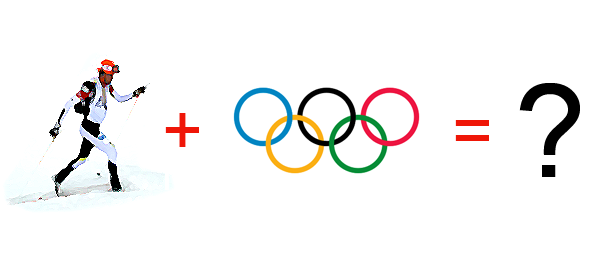
What does the provisional recognition mean?
If you were getting excited about watching skimo racing on TV during the 2018 Olympics in Pyeongchang, South Korea then you can relax because that is unlikely to happen.
In my understanding, this is just the very first step for a sport to have a chance to be included in the Olympics in the future. First, the IOC recognizes there is a large enough organized sport; second, it observes and tries to figure out how is this sport salable for broadcasting; and finally, it maybe includes the sport in the Games.
However, even if the inclusion is looming, the IOC still has to consider whether to just add another sport or kick one out in order to include a new one. It’s business, no other way around it. Environmentally friendly sport or not, the ROI will have to make sense. (Unless some other federation/sport would subsidize it.)
What’s next? Broadcasting rights.
Since the ISMF has the IOC recognition now, we are onto the second step – observing and figuring out how to make skimo TV friendly. What I mean by that is the sport needs to accomplish couple of things to be right for (live) broadcasting:
- attract enough audience,
- based on which numbers broadcasting company can sell advertising,
- which in turn brings enough money to pay for production and distribution costs,
- and have some profit left over.
By now, you might be thinking why I am so focused on TV broadcasting as the only way of monetizing Olympic Games since we know there are other ways for sports to make money. And you are right, there are. But according to IOC revenue sources and distribution page selling broadcasting rights brings the IOC 47% of its revenue. Then 45% is from sponsorships, only 5% is from tickets, and 3% is from licensing.
If we take skimo and say “let’s a find a away to replace some broadcasting money with something else” we will quickly run into a problem. Who would the sponsors be? From what I know, from approaching outdoor companies with offers to advertise on Skintrack, they all have very little money, or so I am being told. That means, there would have to be some big players that are (also) involved in the outdoor industry to pay the difference. Could it be Salomon? Maybe. Black Diamond? Perhaps. Will it be enough? Maybe Adidas since they make some outdoor clothing.
But really, how much money are we talking about for broadcasting rights?
Just a few days ago, the IOC awarded NBC Universal the broadcasting rights (across all platforms) in the USA for the Olympic Games from 2021 to 2032 for $7.65 billion USD. There was also a $100 million signing bonus. And we are talking about the USA rights only.
What does this mean for skimo?
If we agree that a major decision factor, for skimo racing to make it into Olympics, will be whether it can attract large enough audience (advertising money) that will pay for the production costs then there are about two or three scenarios of how this will impact our sport:
1. Skimo stay as is – very unlikely:
- Broadcasters figure out a super cost efficient way to film skimo races in all kinds of weather and terrain to off-set the not so big viewers demand.
- Or the audience rapidly grows in the next couple of years to pay for the production and distribution.
2. Skimo changes drastically – most likely:
Unless the audience grows rapidly, broadcasters will need to lower their costs substantially and make it watchable for the masses. This can be pretty much done in only one way – by changing the sport until it fits the financial equation.
It is difficult to predict how big or small the changes would need to be but I wouldn’t be surprised if this meant lapping the same course (full length individual race) a couple of times and avoiding possible problematic terrain (alpine, etc.) in the process.
And why not have that as the first option on the table? Because after all, even the Olympic 50 km cross-country races are done on an amazingly short loops now:
The use of short loops allows spectators in the stadium to see the contestants every 10-12 minutes. – quoting directly from Sochi Games website explaining the 50 km race
That means that during the Sochi 50 km skate (freestyle) race the athletes did 9 or 10 laps since the winner’s time was just under 1 h 47 min.
3. Skimo changes at least a bit – very likely:
Maybe the change will not need to be as dramatic as I painted above but it still will likely be considerable.
Are Olympics good for skimo? Why we want it there?
So with all this discussed, pretty much the only two questions that really matter are:
- Will Olympics be good for skimo?
- Why do we really want skimo to be an Olympic sport?
These are the most important questions we need to ask because they force us to look inside and evaluate our sport from its roots, to its current state, to its future. Answers will of course depend on individual values, priorities and motives.
As for myself, I am quite undecided about skimo as an Olympic sport but here are some of my thoughts:
If Olympic skimo should degrade to laps sport in unnatural terrain would it still be ski mountaineering racing as we know it? Aren’t we perhaps already half-way there but threading the line still on the good side?
For example, if we look at the sprint, I believe the discipline was invented to comply with the broadcasting “rules” I outlined above, thus, to please the IOC. Do I like the sprint? Kind of. Is it ski mountaineering racing? Definitely not.
Another one would be the vertical race. It has been shortened over the last few years and even a simple technical element such as boot-packing has been ruled out. Only skinning and no transitions are how verticals are done now. So, at its current form, how is it different from a cross-country ski race? Yes, it’s steeper but why not just use xc gear with skins glued on?
On the other hand, Olympics would bring lots of money which would make it appealing to more people – growing our sport significantly. Therefore, maybe we should be happy that more people would be participating in something we believe is the best sport in the world.
Ultimately, the only thing we can do is to watch carefully and demand change if we don’t like where skimo is going. Whichever direction we prefer.
What are your thoughts on skimo becoming an Olympic sport? I am very interested to read them.

